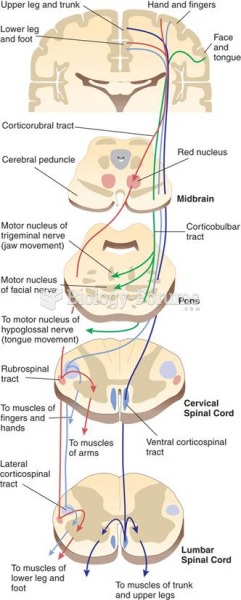|
|
|
This year, an estimated 1.4 million Americans will have a new or recurrent heart attack.
The lipid bilayer is made of phospholipids. They are arranged in a double layer because one of their ends is attracted to water while the other is repelled by water.
Drying your hands with a paper towel will reduce the bacterial count on your hands by 45–60%.
Asthma cases in Americans are about 75% higher today than they were in 1980.
For about 100 years, scientists thought that peptic ulcers were caused by stress, spicy food, and alcohol. Later, researchers added stomach acid to the list of causes and began treating ulcers with antacids. Now it is known that peptic ulcers are predominantly caused by Helicobacter pylori, a spiral-shaped bacterium that normally exist in the stomach.







